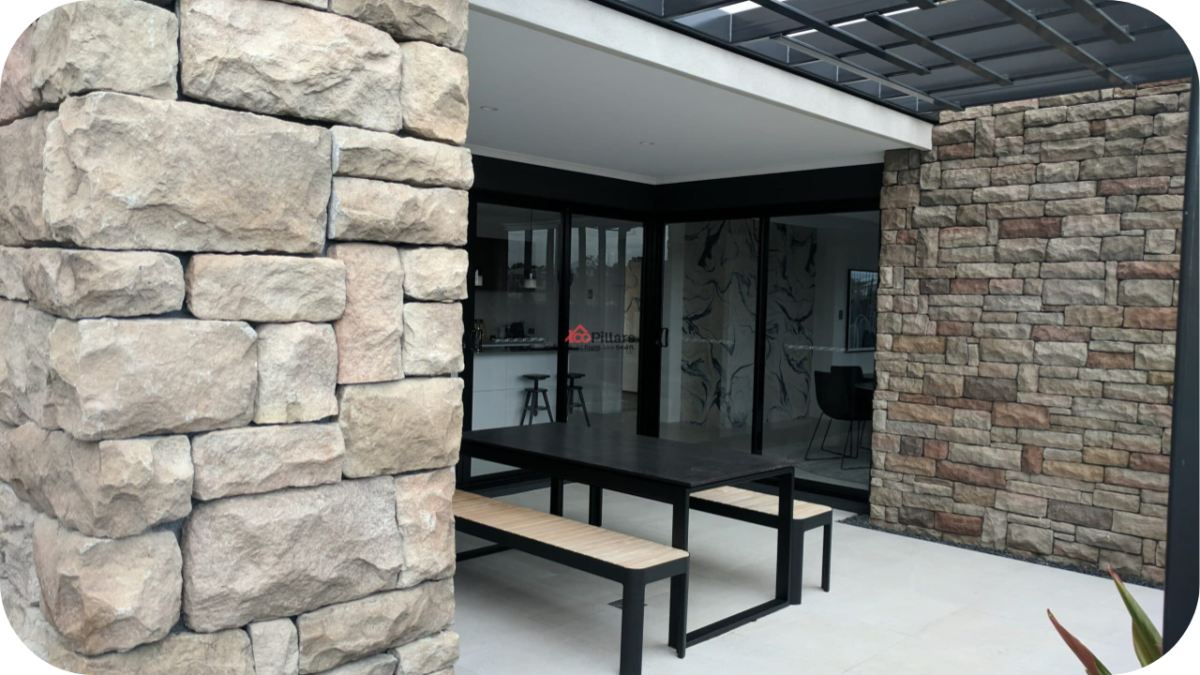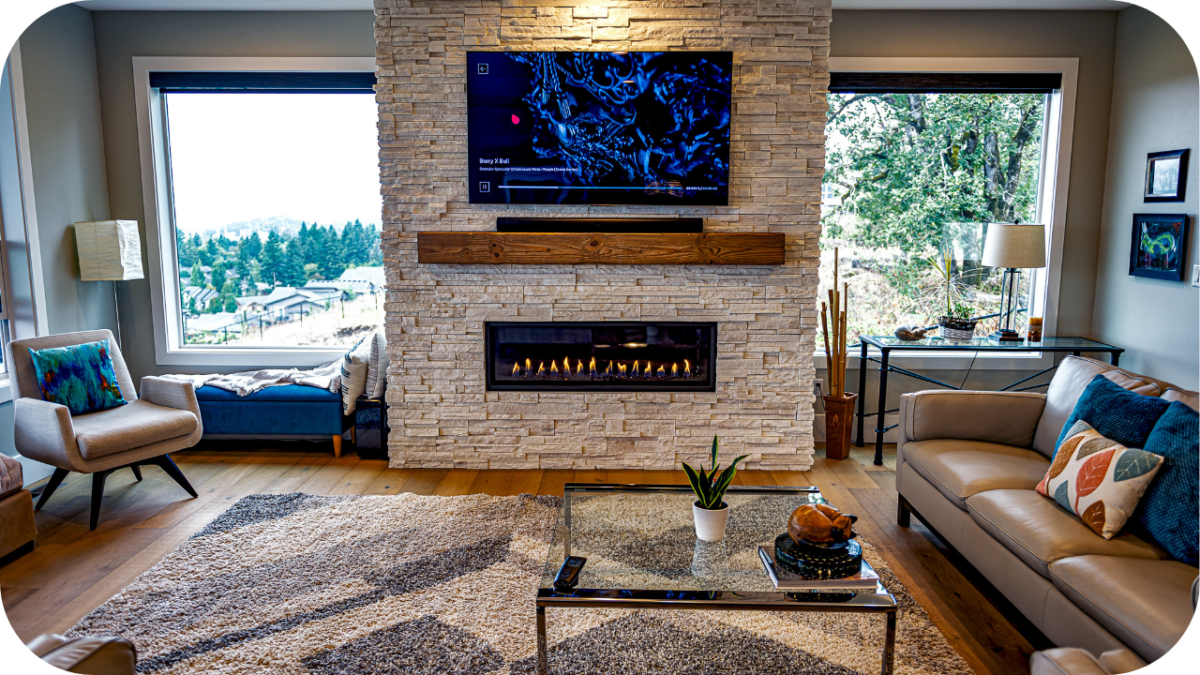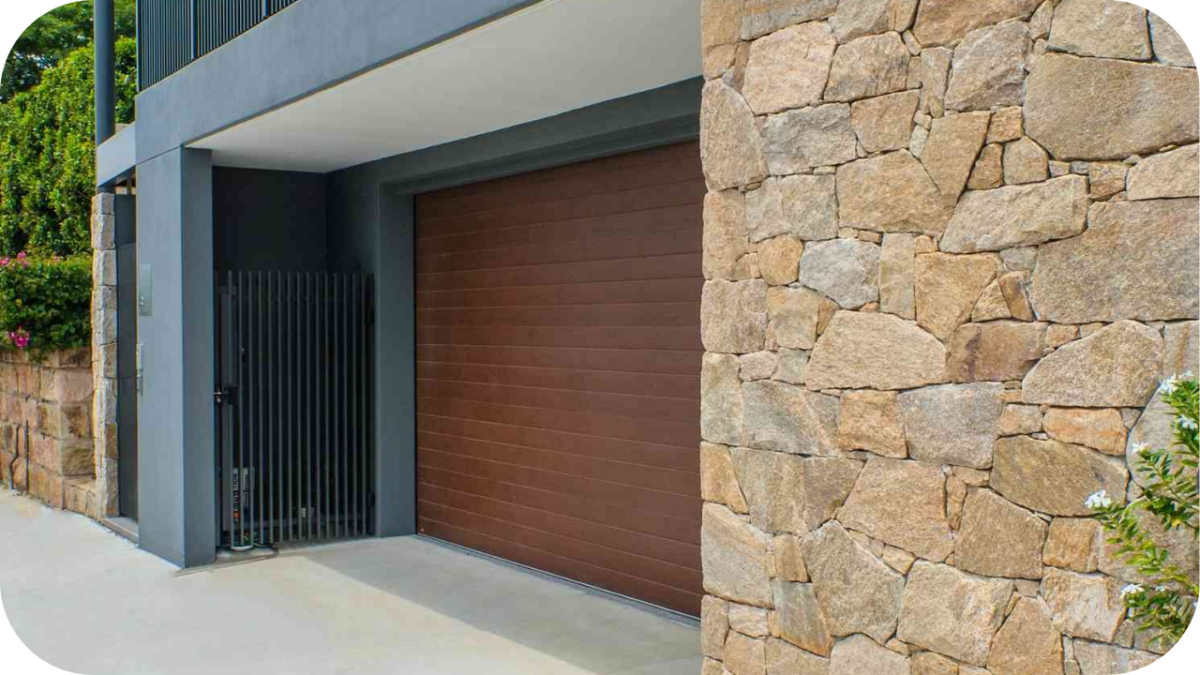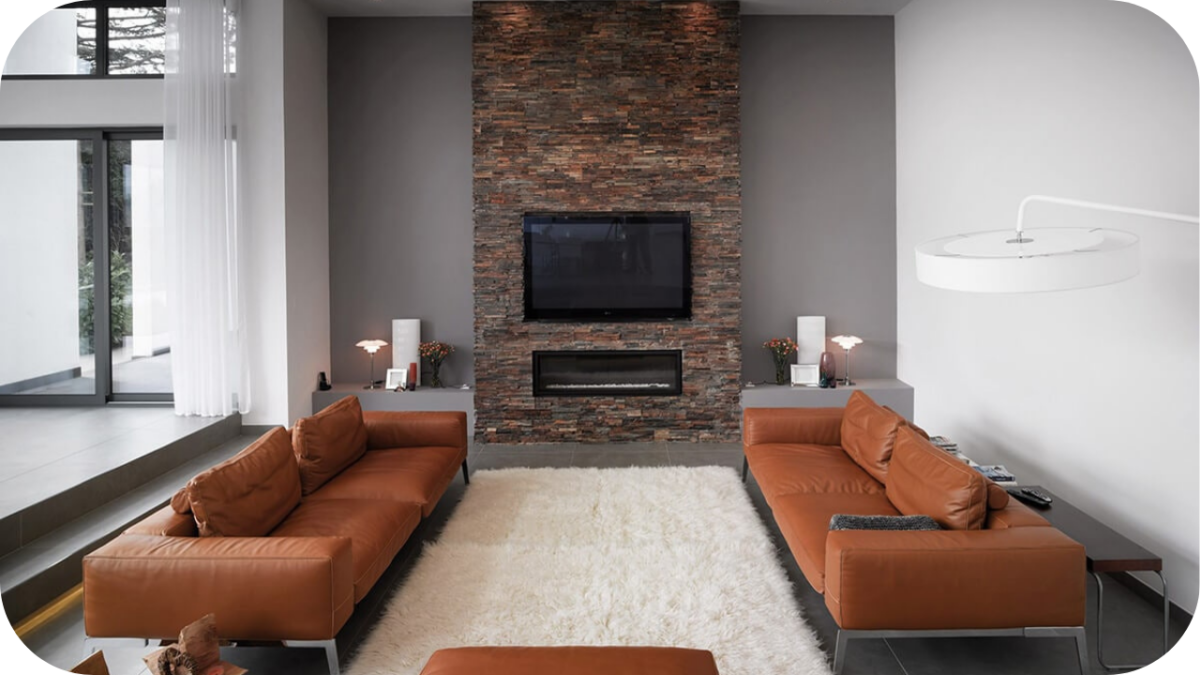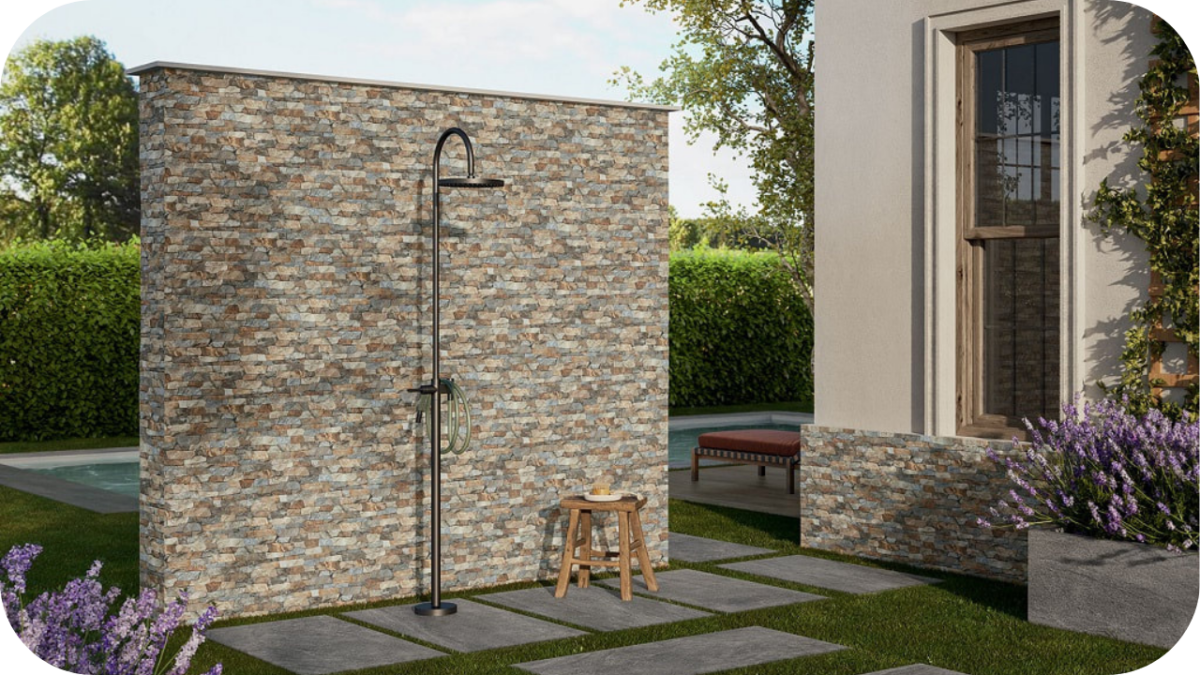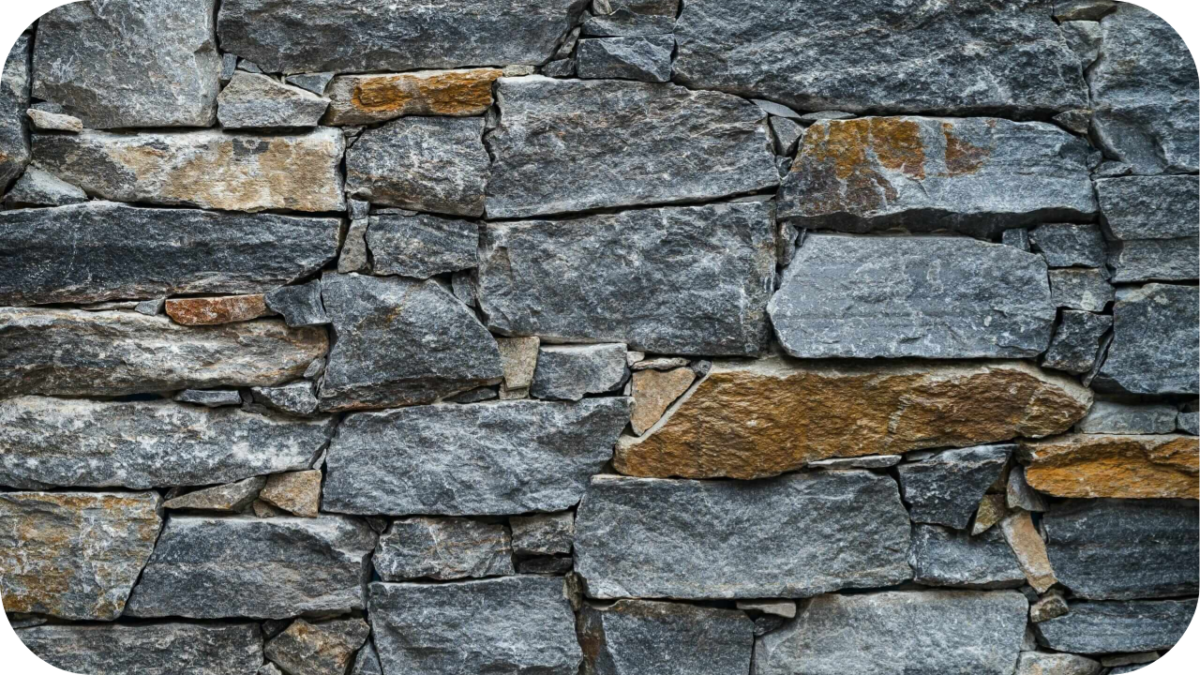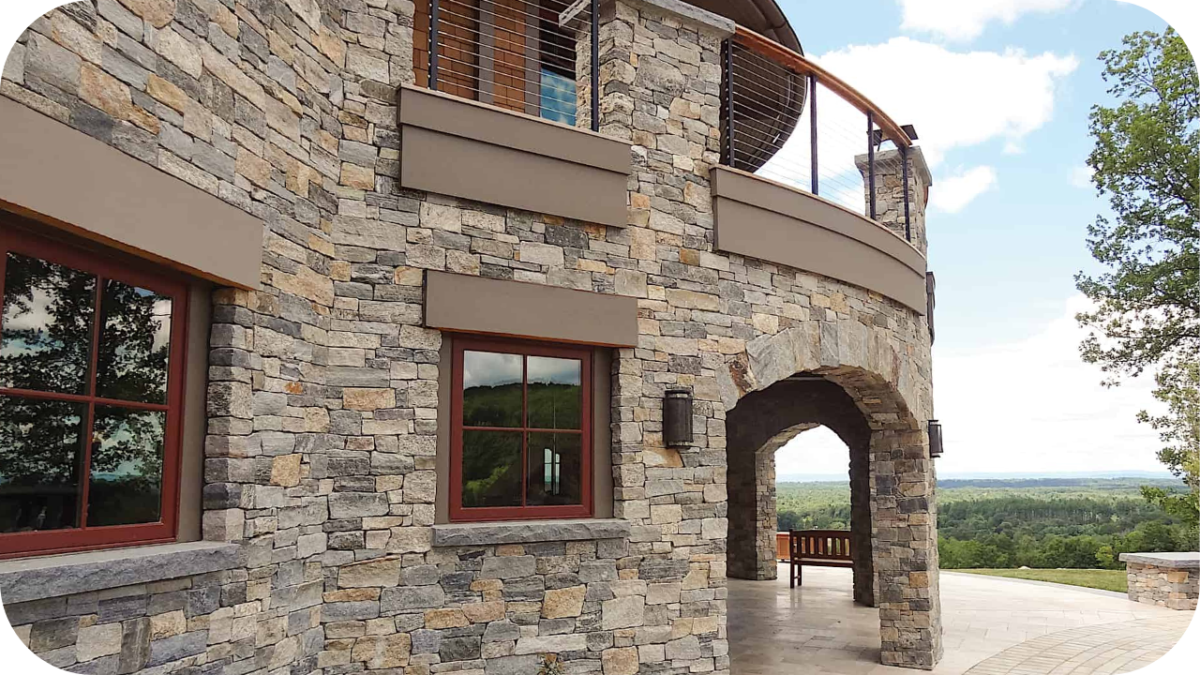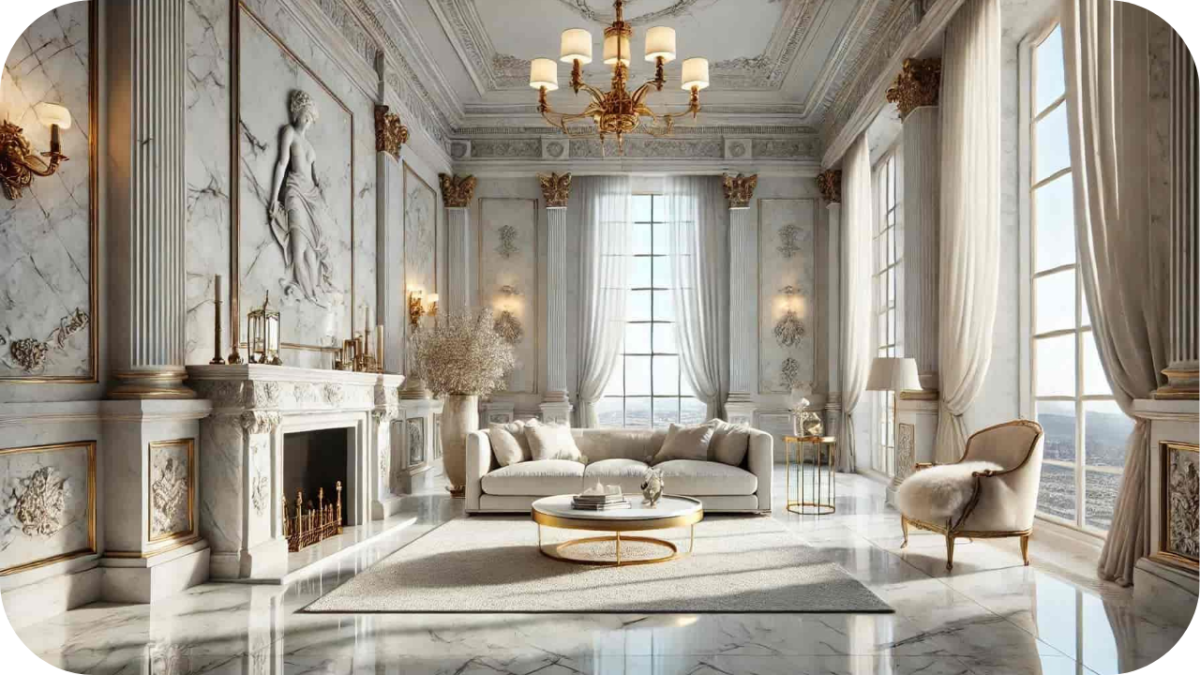The Best Stone Colours for Bold Feature Walls
When designed thoughtfully, a feature wall does more than just enhance a room. It draws the eye, sets the tone, and adds texture that elevates the entire space.
Natural stone is a top choice for creating that impact, offering timeless character and lasting quality. However, it is the colour that truly defines the mood. Choose something too subtle and it goes unnoticed. Choose the right bold tone and it becomes unforgettable.
In this guide, we reveal the best stone colours for bold feature walls that make a powerful statement.
What Makes a Stone Colour ‘Bold’?
A bold stone colour is one that makes a strong visual statement within a space. It stands out against its surroundings and draws attention through richness, contrast or saturation. These colours include deep charcoals, black, burnt reds, ochres and crisp whites with prominent veining.
What makes a colour bold is not just its shade, but also how it interacts with light, texture and space. Polished or rough finishes can enhance its strength, while lighting shifts its tone and intensity.
Bold colours are typically used to create focal points, adding energy, character and architectural weight to both indoor and outdoor feature walls.
Top Stone Colour Choices for Bold Feature Walls
Bold stone colours are transforming feature walls across Australia, blending natural beauty with dramatic flair. These standout shades are redefining modern interiors and exteriors with confident, character-rich design.
1. Charcoal
Luxe limestone features a deep charcoal tone with a fractured finish, perfect for creating bold interior walls, fireplaces, or striking façades. It adds modern depth and contrast, making it ideal for architectural spaces with strong lines and minimalist palettes.
2. Golden-Grey
Buffalo and Hotham granite provide bold, golden-grey tones with natural textures in tightly fitted or dry-stone formats. These stones suit rustic exteriors, entry walls, and garden spaces, offering a balanced mix of earthy warmth and strong visual structure.
3. Warm Beige
Charlotte sandstone, Marrakesh limestone, and Classic travertine bring boldness through warm beige tones and textured finishes. From irregular layouts to chiselled blocks, these varieties work beautifully in transitional interiors or Mediterranean-style outdoor areas, offering comfort and standout appeal.
4. Soft White
Shoreham quartz and Australiana sandstone present soft white tones with subtle warmth and veining. Their creamy and peachy hues work well in light-filled spaces, creating bright, bold feature walls suited to coastal interiors or contemporary indoor applications.
5. Cool Grey
Silver travertine, Blanco quartz, and Minas quartz offer cool grey shades across natural, stacked, or irregular formats. These stones deliver subtle yet bold aesthetics ideal for sleek bathrooms, modern courtyards, or minimal living rooms that need texture and tonal depth.
6. Rust and Earth
Kakadu quartz and Stirling sandstone feature rich earthy reds and rust tones, ideal for grounded feature walls. Their natural patterns and warm shades suit outdoor entertaining spaces or interiors with timber, brick, or exposed architectural materials.
Matching Stone Colours with Finishes
The finish you choose can make or break the look of your stone wall. These are the top finish–colour pairings to get it right.
- Split-Face Finish: Best suited for bold colours like charcoal, black, or deep grey. The rough texture casts natural shadows that enhance depth, making darker stones appear even more dramatic and dimensional on feature walls.
- Honed Finish: Ideal for soft whites, ivory, or silver tones. This smooth, matte finish gives a clean and polished appearance without the gloss, perfect for minimalist interiors or spaces where subtlety is key.
- Tumbled Finish: Complements warm, earthy hues such as beige, cream, or rusty red. The slightly weathered edges and muted surface create an aged, time-worn look that’s ideal for traditional or Mediterranean-style designs.
- Natural Cleft or Riven: Enhances colour movement in stones like sandstone and quartz. The uneven, layered surface highlights natural tonal variation, adding rustic character to both indoor and outdoor feature walls.
- Brushed Finish: Works well with mid-tone greys and muted golds. This gently textured surface adds a soft sheen without being reflective, bringing out the stone’s natural grain while offering a slightly aged, contemporary look for interior and exterior walls.
Styling Tips for Bold Stone Walls
These practical styling tips will help you highlight your stone wall and create a bold, beautiful, and well-put-together space.
- Keep Surroundings Simple: A bold stone feature wall is already the star of the space, so avoid overcrowding it. Use neutral tones on the other walls and stick to clean, minimal furniture. This balances the room and allows the stone to draw attention without visual clutter.
- Use Soft, Focused Lighting: Lighting brings out stone’s natural texture and depth. Install warm downlights, uplights, or wall washers to highlight its surface. Avoid harsh, overhead lighting, which can flatten the look and make bold stone feel too heavy.
- Balance with Natural Materials: Bold stone works beautifully with timber, leather, concrete, or natural textiles. These elements soften the strong lines of the wall while adding warmth and harmony to the space.
- Add Contrast Thoughtfully: If your stone is dark, contrast it with light-coloured furniture, cushions, or artwork. For lighter stone, darker accent pieces will help it pop. Use contrast to create interest, but not so much that it competes with the stone.
- Avoid Competing Features: Keep other focal points to a minimum when using a bold stone wall. Too many statement elements can make the room feel cluttered or confused. Let your feature wall do the talking.
- Play with Texture Layers: Contrast the rough surface of stone with smooth flooring, soft fabrics, or shiny finishes. This adds depth and balance to the room, making it feel well-designed and complete.
- Introduce Plants for Warmth: Greenery softens the hard texture of stone and adds a calming, natural touch. Use potted plants, climbing vines, or hanging greenery to make the space feel more inviting.
- Keep Décor Understated: Choose artwork, mirrors, or shelving that complements rather than competes. Subtle pieces help the wall stay the main focus, especially in smaller rooms where too much decor can overwhelm.
- Frame the Feature Wall: Use built-in shelving, a timber border, or wall recesses to frame the stone and make it feel intentional. This adds structure to the design and creates a more polished finish.
Indoor vs Outdoor Use of Bold Stone Colours
Lighting, finish, and exposure to the elements all affect how the colour appears and performs. Here’s a quick comparison to help guide your choice.
| Feature | Indoor Use | Outdoor Use |
| Lighting Impact | Natural and artificial lighting affect colour tones. | Sunlight can brighten or fade certain colours over time. |
| Popular Colour Choices | Charcoal, black, bold white with veining. | Rust, slate blue, earthy reds, darker tones. |
| Design Style | Suits modern, industrial, or minimalist interiors. | Works well in rustic, natural, or contemporary outdoor settings. |
| Stone Finish | Often polished or honed for a refined look. | Usually rough, split, or natural for grip and texture. |
| Maintenance Needs | Lower—protected from weather and moisture. | Higher—may need sealing to protect from rain and UV. |
| Installation Considerations | Easier access and climate control during fitting. | Needs weatherproof adhesives and drainage planning. |
| Visual Impact | Acts as a bold focal point in small or large rooms. | Adds drama and character to facades, patios, or garden walls. |
When to Go Bold vs When to Stay Subtle
Choosing between bold and subtle stone colours comes down to the room’s size, lighting, and existing decor.
Bold tones such as charcoal, rust, and deep greys are perfect for large, open areas where you want to create a strong focal point. These colours work well in living rooms, entryways, or outdoor entertaining spaces that receive plenty of natural light.
On the other hand, smaller rooms or dimly lit spaces benefit more from subtle tones like warm beige, light grey, or soft white. These colours help maintain a sense of spaciousness and calm.
If the room already includes standout features such as patterned tiles, colourful furniture, or dramatic lighting, a subtle stone choice will balance the design.
Unsure which direction to take? Use bold stone on one wall and complement it with neutral surroundings to keep the space visually grounded and inviting.
Over To You
A bold stone feature wall can completely transform a space, indoors or out. But choosing the right colour and knowing where and how to use it makes all the difference. Whether you go for deep charcoal or soft white with veining, balance is key.
Want expert guidance and premium stone options? Visit Splendour in Stone for tailored advice and stunning materials that bring your vision to life.

